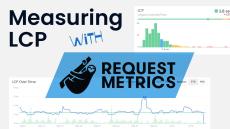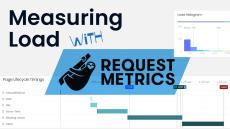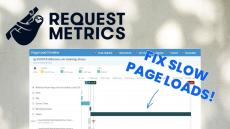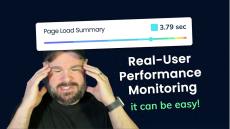- February 2025 (2)
- January 2025 (2)
- October 2024 (4)
- September 2024 (2)
- May 2024 (1)
- April 2024 (1)
- February 2024 (2)
- January 2024 (7)
- October 2023 (2)
- August 2023 (4)
- July 2023 (7)
- June 2023 (8)
- May 2023 (6)
- April 2023 (1)
- February 2023 (1)
- January 2023 (4)
- December 2022 (1)
- September 2022 (1)
- August 2022 (2)
- July 2022 (2)
- June 2022 (3)
- May 2022 (2)
- November 2021 (3)
- October 2021 (3)
- September 2021 (3)
- May 2021 (3)
- December 2020 (2)
- November 2020 (2)
- September 2020 (2)
- August 2020 (3)
- May 2020 (3)
- April 2020 (9)
- March 2020 (6)
- February 2020 (5)
The easiest way to monitor your web performance. Request Metrics records how real users experience your website and shows you simplified metrics and alerting. And at a price that's easy on your budget.
Request Metrics is website performance monitoring, simplified for small teams. It's not a expensive APM "solution" or a complex query language to learn. Request Metrics is simply the key metrics you need to know to keep your website running fast and your customers happy.
Request Metrics was developed by TrackJS partners Todd Gardner, Eric Brandes, and Jordan Griffin. It was developed "in the open", with coding sessions and planning meetings recorded and broadcast on YouTube. They can be found at https://requestmetrics.com/building.
Our Features:
- Monitor Performance From Real Users: We gather metrics from real users visiting your website and aggregate their experience to show you the performance that really matters.
- Measure Your Performance Over Time: We rollup your performance statistics to minutes, hours, and days so you can understand how you compare to last week, last month, or last year.
- Know When Your Website Slows Down: When something is slowing down and your users are frustrated, we'll let you know with a detailed alert report about what's happening and the impact.
- Worth The Price: No suite of tools to deploy, training to attend, or budget approvals. We show you the most important performance metrics you need, simplified, at a price that fits any team's budget.
Your Website, Faster.





















